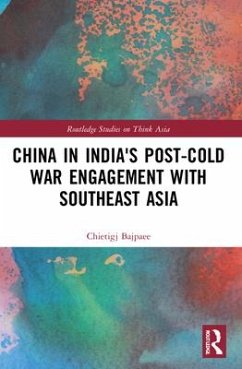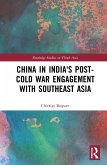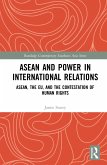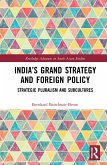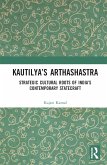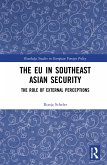This book examines the role of China in India's post-Cold War engagement with Southeast Asia with unique regional insight into Sino-India for academics, policymakers & students of IR, Asian Security, Southeast Asian politics, Indian foreign policy, Sino-Indian relationship, & India's Look East/Act East Policy.
Hinweis: Dieser Artikel kann nur an eine deutsche Lieferadresse ausgeliefert werden.
Hinweis: Dieser Artikel kann nur an eine deutsche Lieferadresse ausgeliefert werden.
"[This book] provides an in-depth analysis of India's Look East Policy (LEP) by explaining its evolution through different phases. [... It] provides an important yet insightful analysis of the interplay between India's relations with Southeast Asia and China. [...] The book is highly recommended for the experts in the fields of international relations, China's foreign policy and also Indian foreign policy to gain a better understanding of China's role in the LEP over time." - Simran Walia, Modern Diplomacy July 2022.
[This book] departs from the conventional understanding in explaining India's engagement with Southeast Asia in the backdrop of economic liberalization and the maturing regional architecture in Asia as well as the growing importance of transnational security threats. [...] The book contributes to filling the gap in the existing literature, as Bajpaee's central argument delves into the assertion that it is not just with 'Act East' but rather the 'China factor' has been instrumental in 'driving and sustaining' India's post-Cold War engagement with Southeast Asia [...] a lucid and coherent read, the book is highly recommendet to both academics and policymakers, as well as students working on areas pertaining to Southeast Asia and Asian Affairs, at large; and Indian foreign policy, India-China relationship, and India's Look East/Act East Policy, in particular." - Amrita Jash, Strategic Analysis Vol 46, No.6, 641-643.
[This book] departs from the conventional understanding in explaining India's engagement with Southeast Asia in the backdrop of economic liberalization and the maturing regional architecture in Asia as well as the growing importance of transnational security threats. [...] The book contributes to filling the gap in the existing literature, as Bajpaee's central argument delves into the assertion that it is not just with 'Act East' but rather the 'China factor' has been instrumental in 'driving and sustaining' India's post-Cold War engagement with Southeast Asia [...] a lucid and coherent read, the book is highly recommendet to both academics and policymakers, as well as students working on areas pertaining to Southeast Asia and Asian Affairs, at large; and Indian foreign policy, India-China relationship, and India's Look East/Act East Policy, in particular." - Amrita Jash, Strategic Analysis Vol 46, No.6, 641-643.

